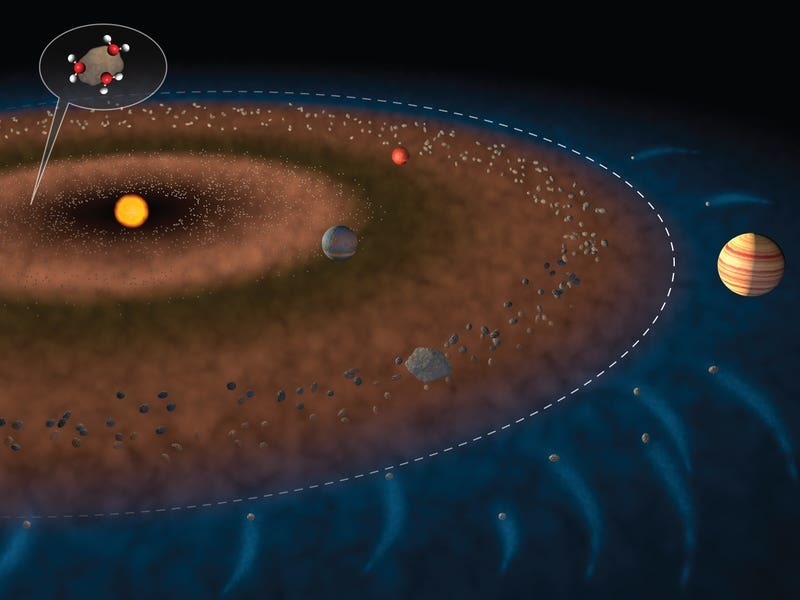Earth’s water did not come from melted meteorites as previous theories had suggested, researchers say.
Water makes up 71% of Earth’s surface, but it is not yet known how or when such massive quantities of water arrived on the planet.
But scientists say their new study brings them one step closer to answering that question.
Researchers analysed melted meteorites that had been floating around in space since the solar system formed some 4.5 billion years ago.
Ms Newcombe said: “We wanted to understand how our planet managed to get water because it’s not completely obvious.
“Getting water and having surface oceans on a planet that is small and relatively near the sun is a challenge.”
Researchers say their findings allow them to rule meteorites out as the primary source of Earth’s water, and could have important implications for the search for water – and life – on other planets.
They also help scientists understand the unlikely conditions that aligned to make Earth a habitable planet.
The study looked at seven melted, or achondrite, meteorites that crashed into Earth billions of years after splintering from at least five planetesimals – objects that collided to form the planets in our solar system.
This experiment was the first time anyone had ever measured the properties in this way, because these meteorites fell to Earth only recently.
Some of the meteorite samples came from the inner solar system, where Earth is located and where conditions are generally assumed to have been warm and dry.
It was generally thought that water came to Earth from the outer solar system, but it has yet to be determined what types of objects could have carried that water.
Sune Nielsen, a study co-author and geologist at the Woods Hole Oceanographic Institution, said: “We knew that plenty of outer solar system objects were differentiated, but it was sort of implicitly assumed that because they were from the outer solar system, they must also contain a lot of water.
“Our paper shows this is definitely not the case. As soon as meteorites melt, there is no remaining water.”
After analysing the achondrite samples, researchers discovered that water comprised less than two millionths of their mass.
Whereas the wettest meteorites – a group called carbonaceous chondrites – contain up to 20% of water by weight, or 100,000 times more than the meteorite samples studied in the research published in Nature.
Ms Newcombe said: “Water is considered to be an ingredient for life to be able to flourish, so as we’re looking out into the universe and finding all of these exoplanets, we’re starting to work out which of those planetary systems could be potential hosts for life.
“In order to be able to understand these other solar systems, we want to understand our own.”






